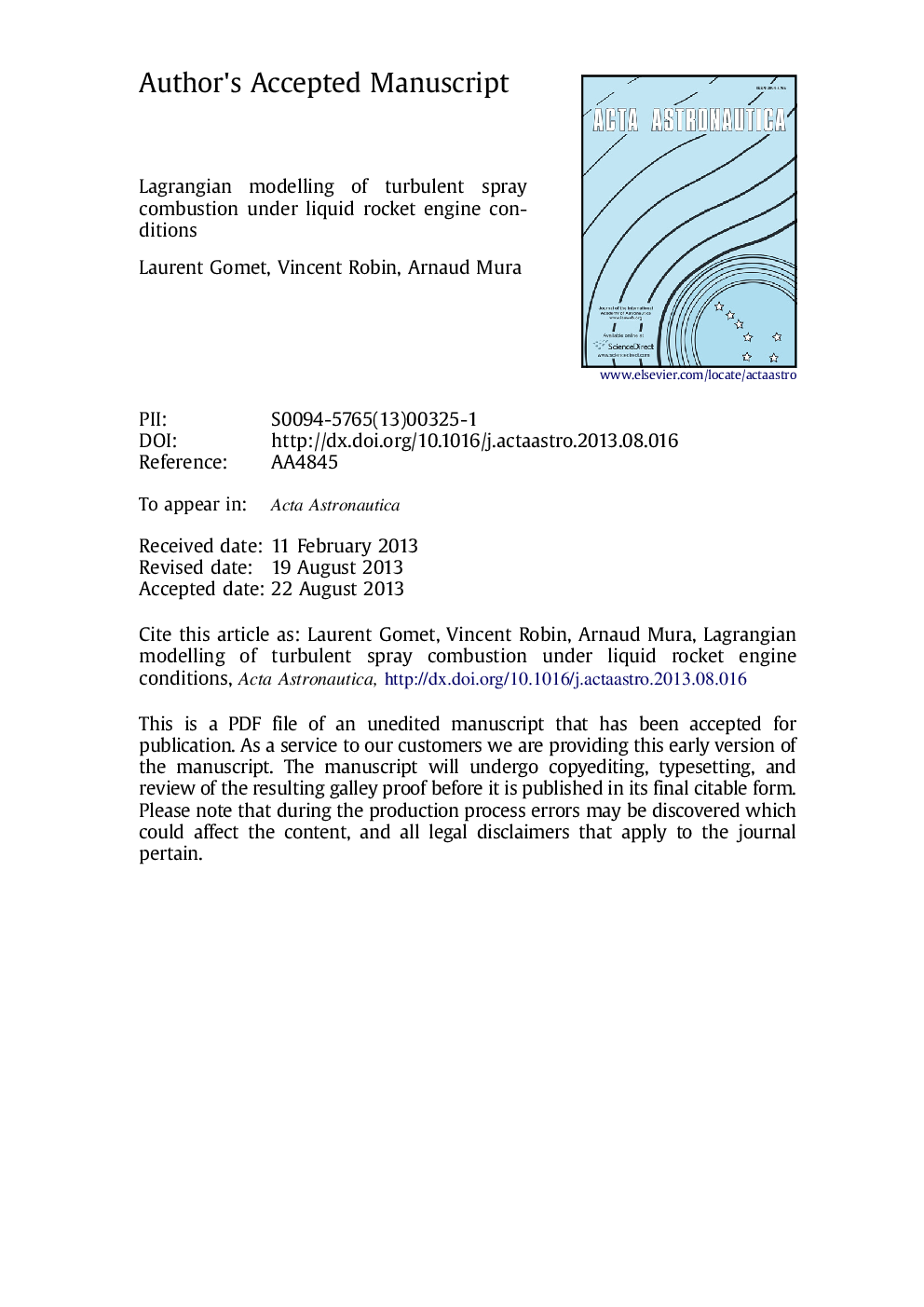| کد مقاله | کد نشریه | سال انتشار | مقاله انگلیسی | نسخه تمام متن |
|---|---|---|---|---|
| 10680829 | 1013344 | 2014 | 16 صفحه PDF | دانلود رایگان |
عنوان انگلیسی مقاله ISI
Lagrangian modelling of turbulent spray combustion under liquid rocket engine conditions
ترجمه فارسی عنوان
مدل سازی لاگرانژی از احتراق اسپری توربین تحت شرایط موتور موشک مایع
دانلود مقاله + سفارش ترجمه
دانلود مقاله ISI انگلیسی
رایگان برای ایرانیان
کلمات کلیدی
میلگرد، موتور موشک، جریان دو مرحله ای، مدل سازی احتراق آشفته،
موضوعات مرتبط
مهندسی و علوم پایه
سایر رشته های مهندسی
مهندسی هوافضا
چکیده انگلیسی
In the field of liquid rocket propulsion, the use of computational design tools, such as computational fluid dynamics (CFD) solvers, may provide a great deal of help to proceed with the primary design choice. Considering the complexity of rocket engine geometries, as well as associated fluid flow conditions, the use of Reynolds-Averaged Navier-Stokes (RANS) numerical simulations remains very popular. Important modelling efforts are therefore still required to provide reliable computational models able to describe the complex interaction that takes place between turbulence and chemistry in such cryogenic high-speed flows. The present manuscript reports the results of some recent investigations conducted in this field. The modelling analysis relies on a Lagrangian framework, the salient features of which consist in approximating the Lagrangian path in a reduced composition space made up of the mixture fraction variable, i.e. a conserved scalar introduced to represent the variations of composition, and a progress variable, i.e. a reactive scalar to follow the departures from chemical equilibrium. The retained methodology allows to presume the joint probability density function of the two scalar fields without invoking the assumption of statistical independence between them. Equivalence ratio fluctuations induced by the vaporization of the liquid phase are considered as additional sources terms appearing in the transport equation of the mixture fraction variance. The transport of the corresponding mean scalar dissipation rate (SDR), which is a key quantity in the corresponding closure, is also affected by the vaporization processes. The proposed model has been implemented into the U-RANS CFD code N3S_Natur, while the liquid phase is described using a Lagrangian module. The capabilities of the computation model are evaluated through a detailed comparison with the experimental databases gathered on the ONERA Mascotte test bench. The corresponding test rig consists of a low-speed round jet of liquid oxygen surrounded by an atomizing high-speed co-flowing jet of gaseous-hydrogen. The obtained results confirm that (i) the additional fluctuations induced by the vaporization processes play an important role, (ii) the influence of transient droplet heating on turbulent combustion must be taken into account.
ناشر
Database: Elsevier - ScienceDirect (ساینس دایرکت)
Journal: Acta Astronautica - Volume 94, Issue 1, JanuaryâFebruary 2014, Pages 184-197
Journal: Acta Astronautica - Volume 94, Issue 1, JanuaryâFebruary 2014, Pages 184-197
نویسندگان
Laurent Gomet, Vincent Robin, Arnaud Mura,
